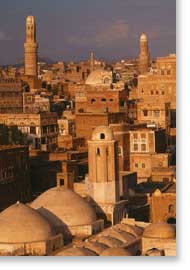Renewable Georaphy
Optimistic urban energy visionaries see neighbourhoods, cities and city regions evolve into autonomous and renewable-energy empowered, efficient environments: the city as renewable power station is a compelling concept. The idea of distributed solar, wind, water and biomass derived fuel sources driving entire cities is no utopian dream: it is inevitable. And practical visionaries work in many developing countries to see villages and rural communities become energy independent, supplying the micro-loans to finance the acquisition of renewable energy for lighting, cooking, heating and to power computers…
A renewable and distributed power geography offers immense and immediate advantages …. In fast-growing urban areas the annual cost of expanding, upgrading and maintaining electric power grids can easily exceed that of power generation itself. Therefore investment in distributed generation can be an initial expenditure thus quickly amortized. Grid reliance can be reduced, needed expansions minimized, and transmission system and distribution capacity margins increased. The risk of power outages induced by grid failures is dramatically buffered through supplemental power generation capacity installed on countless rooftops, along with considerable cogeneration capacity for industry, institutions and mixed-use commercial complexes. These are important benefits available immediately, while the necessary supply balancing and dispatch provisions are made, as described in Section 3.4, Space, time and energy. For individual consumers, cogeneration in particular, but also certain other renewable forms of hybrid and autonomous energy supply systems described below, offer a highly economical and competitive way of achieving energy security, carbon neutrality and broad sustainability in resource use. Finally, distributed generation boosts overall energy efficiency, eliminating much of the approximately 7 per cent in loss that are typically incurred when carrying electricity through long power lines...
...a determined detachment from the fossil-fuel umbilical cord can unlock massive innovative opportunities in building technology and design, energy technology and public as well as private infrastructure technology. Physical energy transformations take place mostly at a local level: in industries, on farms, in production and consumption – and in cities and human settlements, whether these changes to distributed and networked renewable-power generation models are supply- or demand-side based. The wider energy environment of cities is shifting, making dramatic changes to urban energy regimes inevitable. National policy frameworks are established at a rapid pace. Across the countries of the European Union, for example, the average of all national targets in renewable energy generation is 21 per cent of electricity production, to be reached by 2010. While targets rarely translate into reality, they signal a certain willingness to contemplate action, and are a prerequisite for shoring up the nascent European carbon market. Nationally declared commitments range from targets as low as 3.5 per cent in Hungary, starting from a very low baseline; to Sweden at 60 per cent and 78 per cent in Austria with its pioneering solar village network tradition. Today, while the commercial energy share of non-hydropower based renewable energy is still in the low single-digit percentile, these systems are set on a rapid growth trajectory. Worldwide, in the decade preceding 2004, wind power supply grew by 30 per cent annually, photovoltaics (PV) by nearly 25 per cent and ethanol production by 7 per cent. The consumption of all other sources, fossil and nuclear, grew far less in comparison: in single digits. When expressed as share of growth in renewable capacity over the period 2000 to 2004, grid-connected PV was the leader by far, at over 60 per cent, followed by wind and biodiesel...

The historical city core of Sana’a, Yemen, is a living monument to ancient thermal design principles guiding building and urban form alike. A centre of trade, the desert community also contained numerous gardens and small farms, contributing to its relative self-sufficiency in energy and food supply. Today, the old centre struggles to maintain its meaning in a spreading sea of air-conditioned suburbs, to a large extent financed by Yemenis working in Saudi cities, industries and oil fields.
photo © Tibor Bognar








